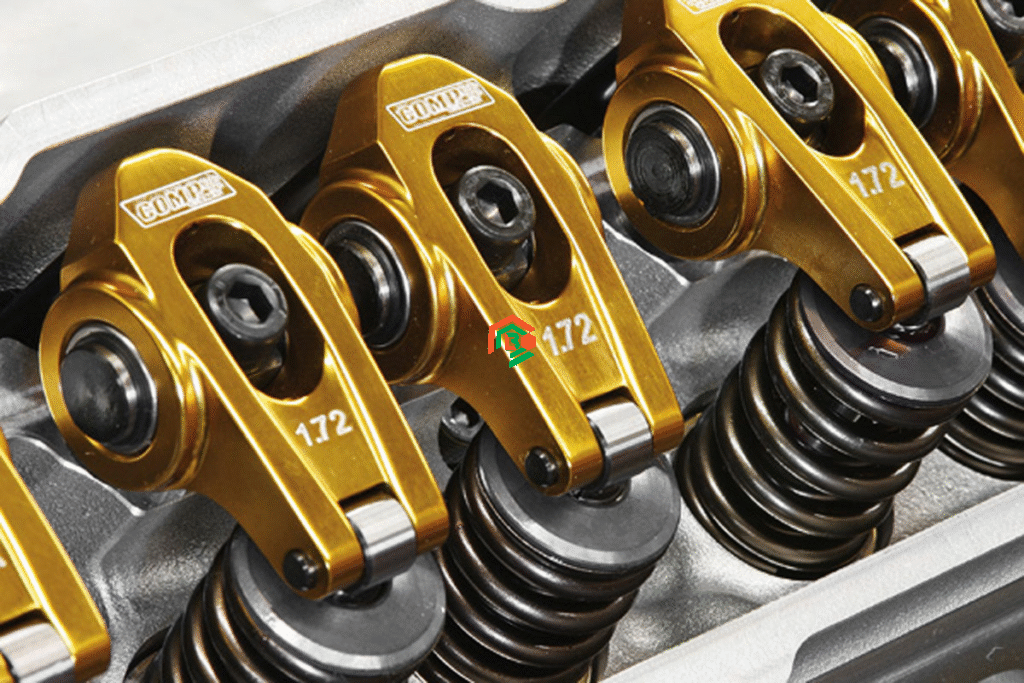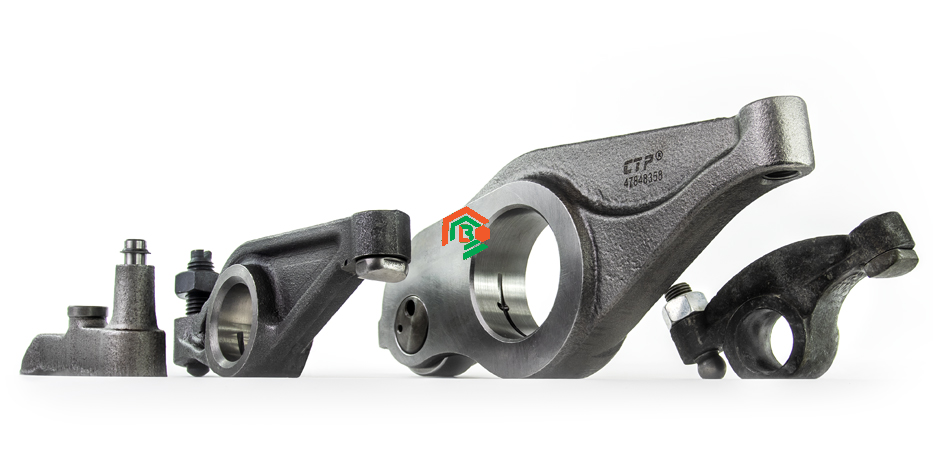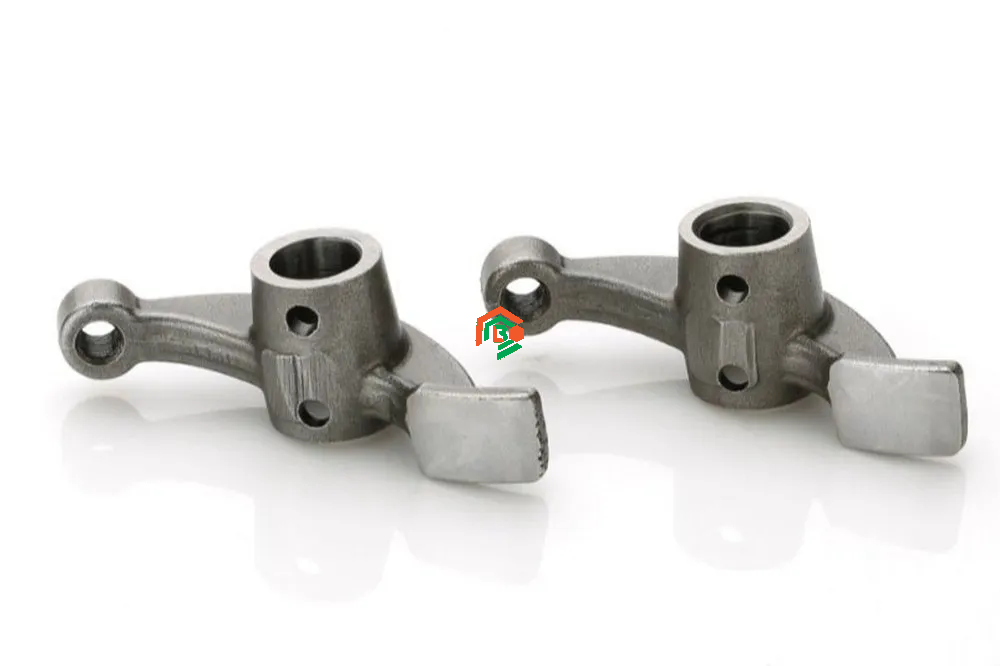Rocker arms are small but powerful parts in your car’s engine. They help the engine breathe and make your car run smoothly. Think of them like a seesaw that opens and closes valves inside the engine. Sounds tricky? Don’t worry! This guide will explain rocker arms in a simple and fun way, even if you’ve never looked under a car’s hood before.
What Is a Rocker Arm in a Car?
A rocker arm is a small metal lever that helps control the engine valves in your car. It sits on top of the engine’s cylinder head and connects the camshaft to the valves. When your engine is running, the camshaft pushes the rocker arm up and down. This movement opens and closes the valves, letting air in and out of the engine.
Without rocker arms, your engine wouldn’t know when to breathe in air or push out exhaust. So, they play a super important job even though they’re not very big.
In simpler terms: The rocker arm is like a helper in a game. The camshaft tells it when to move, and it moves the valves so the engine can do its job.
Why Are Rocker Arms Important?
Rocker arms are important because they make sure your engine breathes at the right time. They control the timing of the air and fuel mixture going in and the exhaust gases going out.
Here’s why they matter so much:
- Engine Efficiency: They help the engine work smarter and burn fuel better.
- Smooth Operation: Rocker arms make sure the engine runs without weird noises or problems.
- Performance: Better rocker arms can improve horsepower and fuel economy.
- Durability: Strong rocker arms last longer and handle higher engine speeds (called RPMs).
If rocker arms stop working, your engine becomes weak, noisy, or may even stop running.
How Do Rocker Arms Work?
To understand how rocker arms work, let’s imagine a game of “push and pull.”

Inside your engine, the camshaft spins. As it turns, it pushes up on one end of the rocker arm. This makes the other end go down, which opens a valve. When the camshaft stops pushing, a spring helps close the valve again.
It’s just like a seesaw at the playground. One side goes up, the other goes down. That’s exactly how rocker arms move — up and down — over and over again.
What Does a Rocker Arm Do?
A rocker arm’s main job is to push the engine valves open and let them close again. This allows air and fuel into the engine and lets exhaust gases out. It’s like opening and closing doors at just the right time.
What Happens If It Breaks?
If a rocker arm breaks, the engine can’t open and close its valves properly. This can lead to:
- Engine misfires (when the engine shakes or runs rough)
- Loud ticking or tapping noises
- Loss of power
- Poor fuel mileage
- Check Engine Light turning on
In worst cases, the engine won’t start at all.
Can You Drive With a Bad Rocker Arm?
Technically, you can drive with a bad rocker arm — but you shouldn’t. A damaged rocker arm means the engine isn’t working right. This can hurt other parts of the engine over time. You might get stuck or cause expensive damage. So, if your rocker arm is failing, fix it as soon as possible.
Common Signs of Rocker Arm Problems
It’s important to spot rocker arm problems early. Here are signs to watch for:
- Tapping or ticking noise from the engine, especially when starting or idling.
- Loss of engine power when driving or accelerating.
- Check Engine Light comes on with error codes related to the valvetrain.
- Engine misfires or rough running.
- Decreased fuel efficiency (you visit the gas station more often).
- Unusual engine vibration or shaking.
These signs often mean the rocker arm is worn, cracked, or not working right.
Different Types of Rocker Arms
There are a few main types of rocker arms used in vehicles:
- Stamped Rocker Arms: Made from stamped steel. Cheap and common in everyday cars.
- Roller Rocker Arms: These have small wheels (rollers) to reduce friction. Used in performance engines.
- Shaft Rocker Arms: Mounted on a shaft for better stability. Found in high-performance or racing engines.
- Pedestal Rocker Arms: Mounted directly on the cylinder head, common in modern engines.
Each type has different benefits based on the engine’s needs — performance, reliability, or cost.
What Are Rocker Arms Made Of?
Rocker arms can be made from different materials, and each one affects how the rocker arm works:

- Steel: Strong and affordable, but heavier.
- Aluminum: Lighter and great for high RPMs but can wear out faster.
- Chromoly or Billet Steel: Used in racing engines. Very strong and heat-resistant.
Material choice depends on your driving needs. Daily drivers use steel or aluminum. Race cars use high-strength alloys.
Steel vs. Aluminum Rocker Arms
Steel rocker arms are durable and don’t wear out easily. They’re great for everyday driving and last a long time.
Aluminum rocker arms are lighter, which helps high-performance engines spin faster. But they can wear out quicker and may need replacing more often.
Which is better? For regular cars, steel is great. For racing or modified cars, aluminum offers better performance at higher speeds.
Are Roller Rocker Arms Better?
Yes — for many engines, roller rocker arms are better. They have a small wheel (roller tip) that reduces friction and wear. Here’s why people like them:
- Increases horsepower
- Reduces engine heat
- Extends engine life
- Improves efficiency
But they can be more expensive and are usually used in performance or upgraded engines.
How to Check a Rocker Arm at Home
You don’t need to be a mechanic to spot problems. Here’s a simple way to check rocker arms:
- Listen to your engine: Clicking or ticking noises? It might be the rocker arm.
- Check for misfires: If the car shakes or loses power, it could be a rocker issue.
- Remove the valve cover: (only if you’re confident). Look for loose or broken rocker arms.
- Feel for movement: With the engine off, gently move the rocker arms. If one moves too much or feels loose, it may be bad.
Note: If unsure, always take your car to a trusted mechanic.
How Much Does It Cost to Replace Rocker Arms?
Replacing rocker arms can cost anywhere between $300 to $1,200 in the United States. Here’s why:
- Parts: Rocker arms cost $20 to $60 each.
- Labor: Mechanics may charge 4 to 8 hours of labor, depending on the engine.
If you have a V6 or V8 engine, expect higher costs because there are more rocker arms to replace. Some engines may also need extra parts like pushrods or lifters replaced too.
If you’re good with tools, you can save money by doing it yourself. But if you’re not sure, let a mechanic handle it to avoid costly mistakes.
The Bottom Line
Rocker arms are like tiny superheroes in your car’s engine. They don’t get much attention, but they help your car breathe, run smooth, and stay powerful. Whether made from steel or aluminum, whether stamped or roller style — every rocker arm has a job to do.
If one breaks, your engine might sound funny, lose power, or stop running altogether. The good news? Rocker arms are replaceable, and they’re not the most expensive engine part.
By understanding how rocker arms work and what they do, you’ll be smarter about car maintenance. Even kids can learn how this important little part helps their family’s car go!


